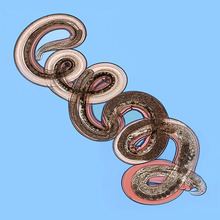Suborder Strongylida Higher classification Secernentea | Phylum Nematoda Scientific name Strongylida Rank Order | |
 | ||
Lower classifications Trichostrongylus, Haemonchus contortus, Ostertagia, Dictyocaulus, Ancylostomatidae | ||
Mvi 5532 l3 strongylida
The Strongylida suborder includes many of the important nematodes found in the gastrointestinal tracts of ruminants, horses, and swine, as well as the lungworms of ruminants and the hookworms of dogs and cats.
Contents
- Mvi 5532 l3 strongylida
- Medical vocabulary what does strongylida mean
- Taxonomy
- Diaphanocephaloidea
- Ancylostomatoidea
- Strongyloidea
- Trichostrongyloidea
- Metastrongyloidea
- References
Medical vocabulary what does strongylida mean
Taxonomy
This suborder includes (superfamily - included families):
Diaphanocephaloidea
These are parasites of lizards and snakes. They have a direct lifecycle in soil.
Ancylostomatoidea
These have very large buccal cavities. They infect the small intestine of mammal carnivores by skin penetration.
Strongyloidea
These have large buccal capsules with corona radiata. Most of them infect the large intestine by oral ingestion of the larva.
Trichostrongyloidea
These worms have very small mouths and are found in a large number of hosts.
Metastrongyloidea
All of these parasites go through a snail to infect the lungs or vascular system of mammals, like artiodactyls, carnivores, marsupials, and cetacea.
